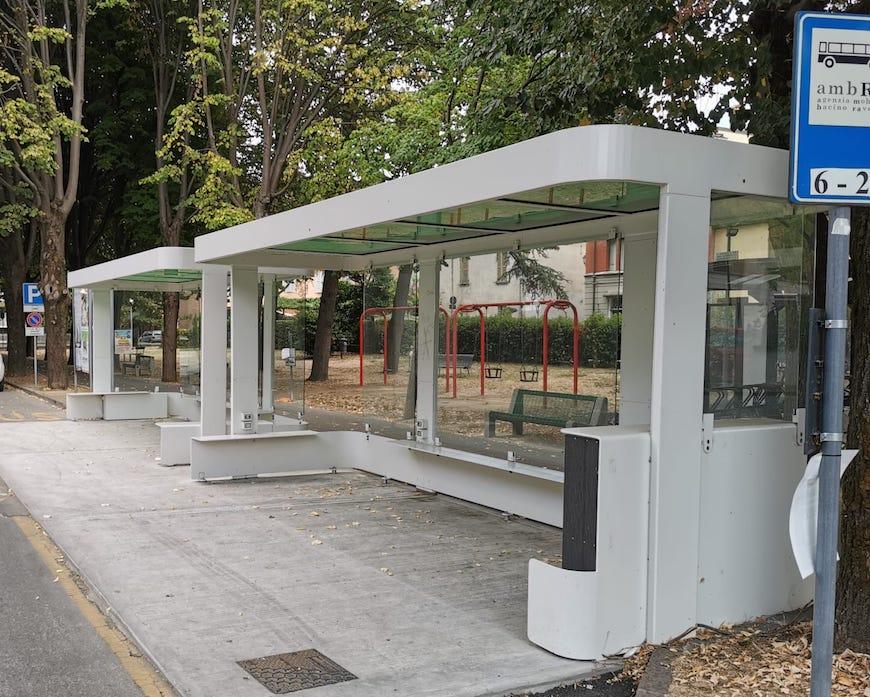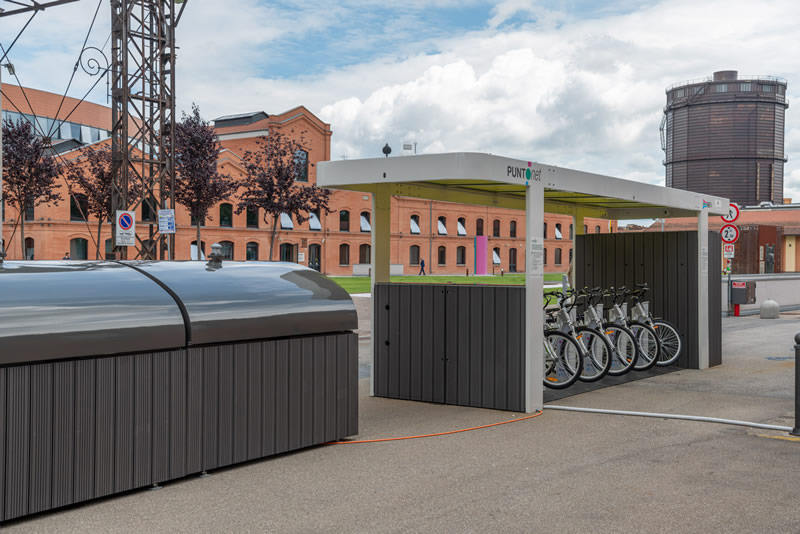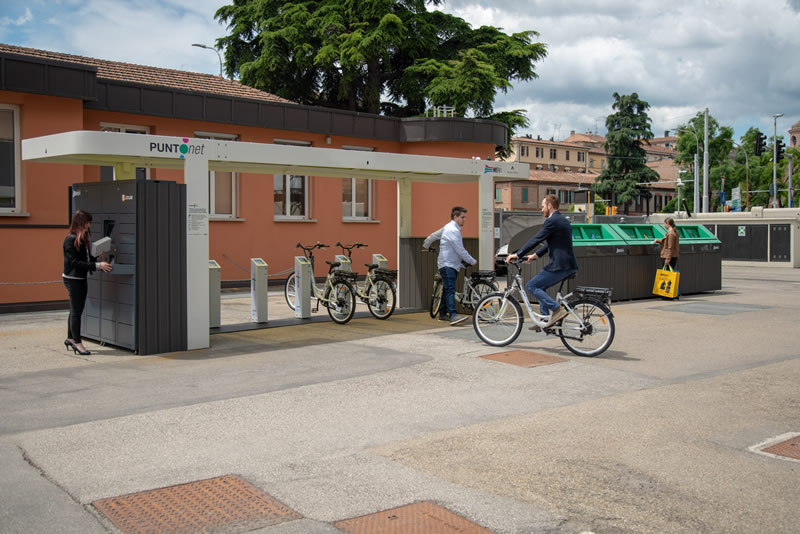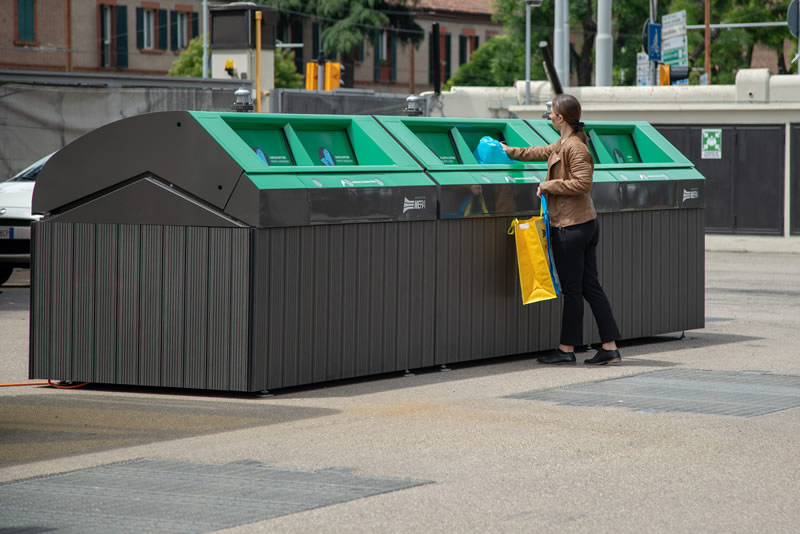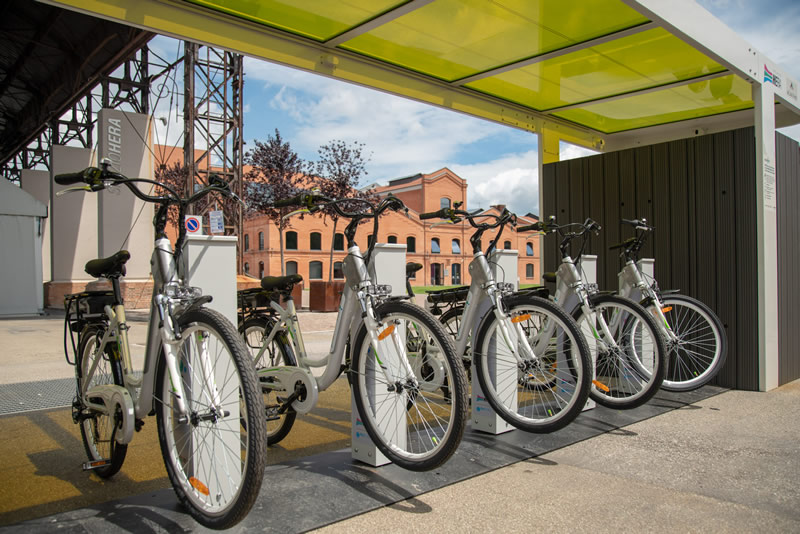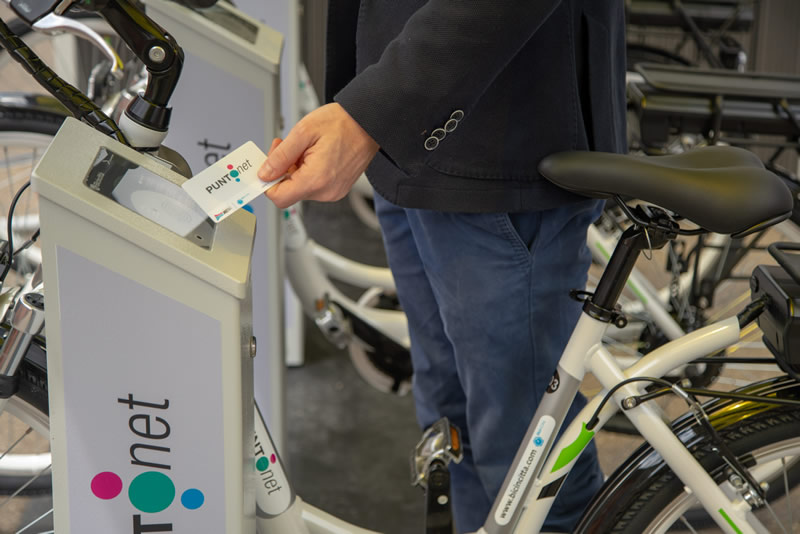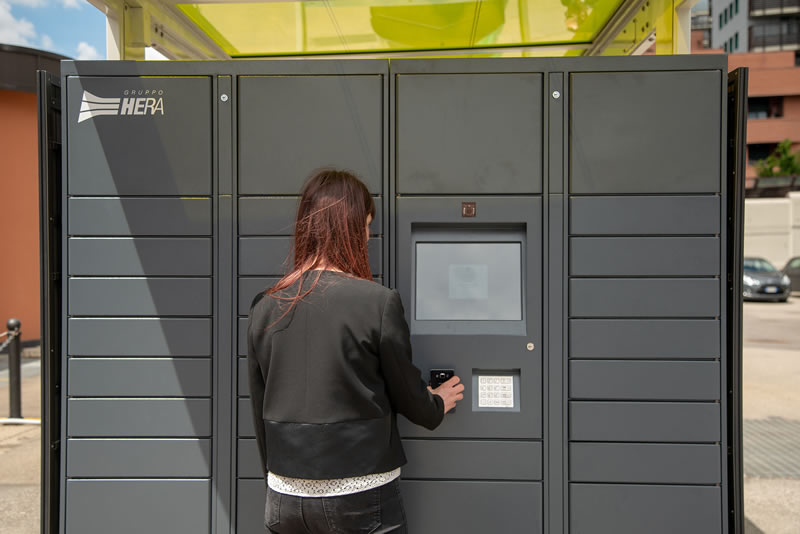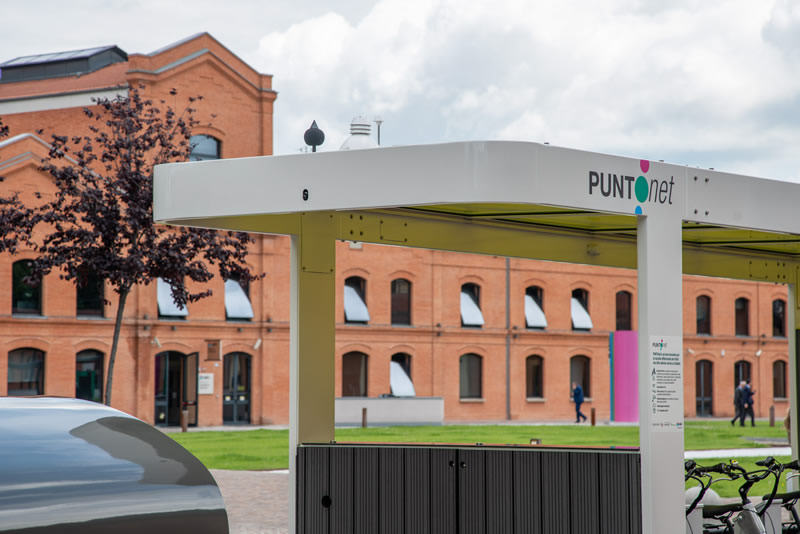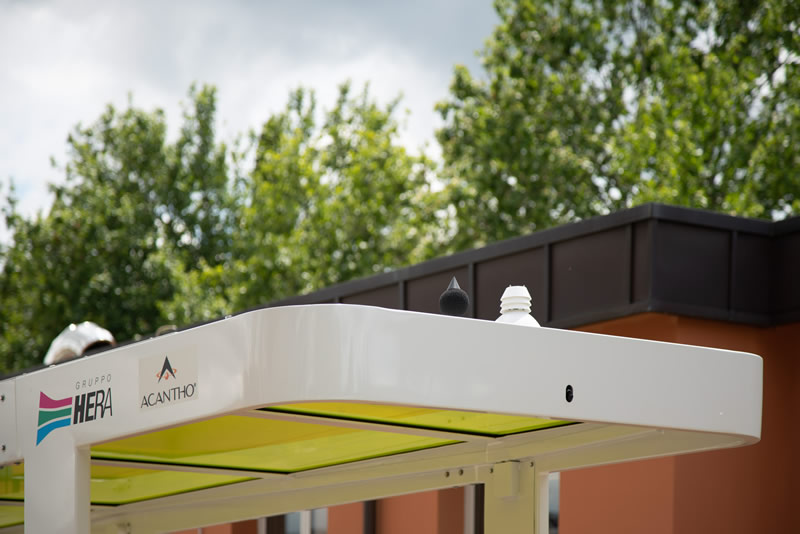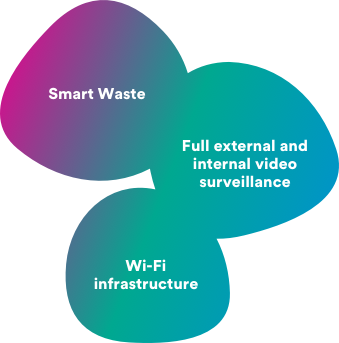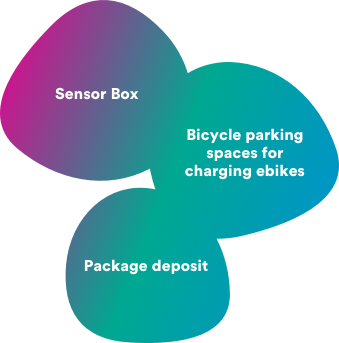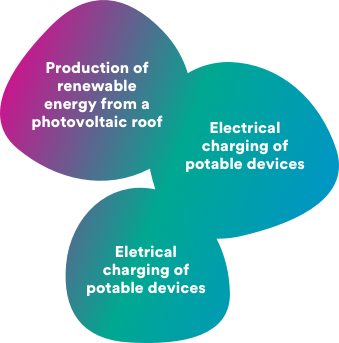Technological infrastructure
Technological infrastructure
- Group
- Innovation
- Smart City
- Technological infrastructure
The main problems of our cities include:
- Safety
- Air quality, particularly concerning the concentrations of PM 10 and NOx and their direct correlation with people’s health;
- The need forincreasingly powerful data transmission networks to enable the development of new smart services;
- The availability of new energy supplying systems for electric mobility, necessary for the electrification of the transport system and the pursuit of a transition towards carbon-free systems.
The presence of these problems, together with the Cyber-Physical System concept, has, as a whole, contributed to developing the idea of a single point, taking the form of a multifunctional station, where all the elements for preventing and solving problems that may arise in a city are concentrated.
PUNTOnet technology station
The area can be equipped with multifunction shelters called PUNTOnets consisting of a powder-coated, hot-galvanised metal structure, a roof made of silkscreened layered glass and 100% recyclable composite wood coverings containing natural fibres, polymers and additives.
The station is connected to the electricity and data networks, which provide the following services at the same point:
- Full external and internal video surveillance
- Wi.Fi. infrastructure
- Sensor Box for monitoring the air quality and measuring noise pollution
- Bicycle parking spaces for charging pedal-assisted bicycles (ebikes)
- Package deposit
- Production of renewable energy from a photovoltaic roof in place of the layered glass roof
- Tri-ride charging
- Charging of portable devices
The solution is modular so some of the services can be excluded and others added.
The structure is designed to be self-supporting so there is no need for any digging or foundations, but it may require ground plug fixtures in some cases.
If there are no electric bicycles, the services can be housed in an interactive media station.
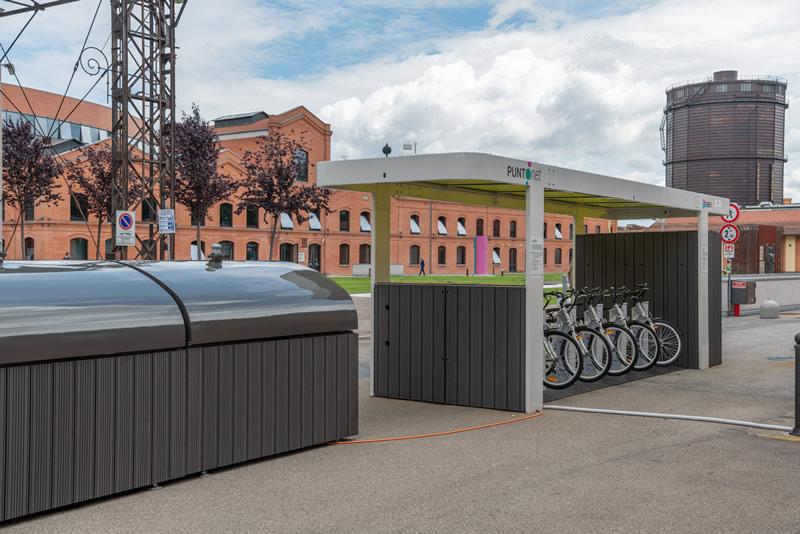
Smart Waste
L’isola tecnologica PUNTOnet potrà essere affiancata da un’innovativa batteria di contenitori per i rifiuti denominata Smart Waste.
The PUNTOnet technology station can be equipped with an innovative set of Smart Waste bins.
The innovative aspect of the collection system is its ability to weigh the waste deposited by the user and this will ensure a perfect balance in the management of service costs and disposal costs.
The new waste collection model consists of a set of bins of limited height so that they can be used by the disabled and reduce the visual impact of the basic waste collection point. The waste bins are contained in a single box that houses the user identification system based on RFID technology (with a special card), NFC technology (mobile phone) or an APP. The bins are normally closed and the waste can be delivered in two simple operations without having to touch the system: log-in and deposit (there is no need to press a lever or pedal).
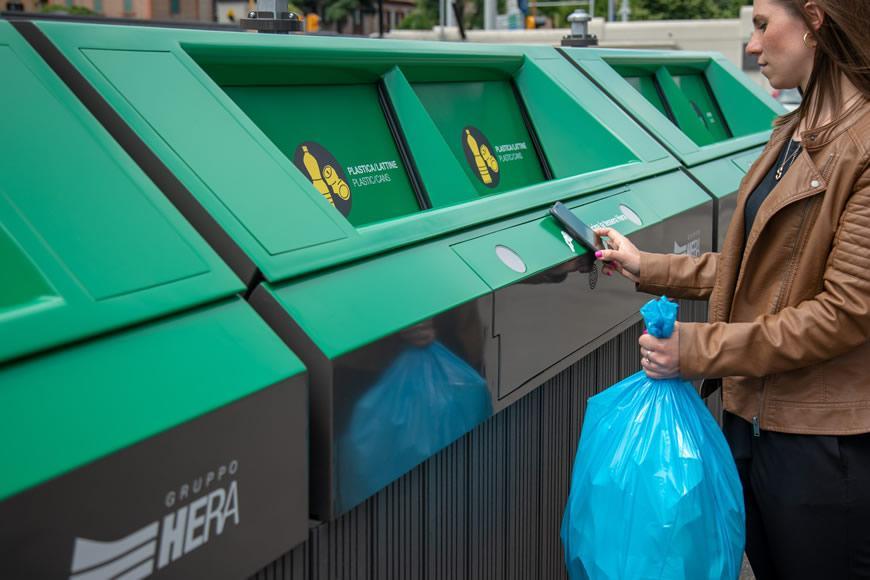
PUNTOnet.BIKE
PUNTOnet.BIKE is a multifunction technology station comprising a powder-coated hot-galvanised metal structure, a roof made of silkscreened layered glass and 100% recyclable composite wood coverings containing natural fibres, polymers and additives.
It can house smart services for the city at a single point:
- Full external and internal video surveillance
- Wi.Fi. infrastructure
- Sensor Box for monitoring air quality and measuring noise pollution
- Bicycle parking spaces for charging pedal-assisted bicycles (ebikes)
- Production of renewable energy from a photovoltaic roof in place of the layered glass roof
A LED with adjustable intensity and colour lights the station. It has sockets for charging wheelchairs and a connection to the electricity network and data network.
The structure is designed to be self-supporting so that no digging or foundations are necessary, but it may require ground plug fixtures in some cases.
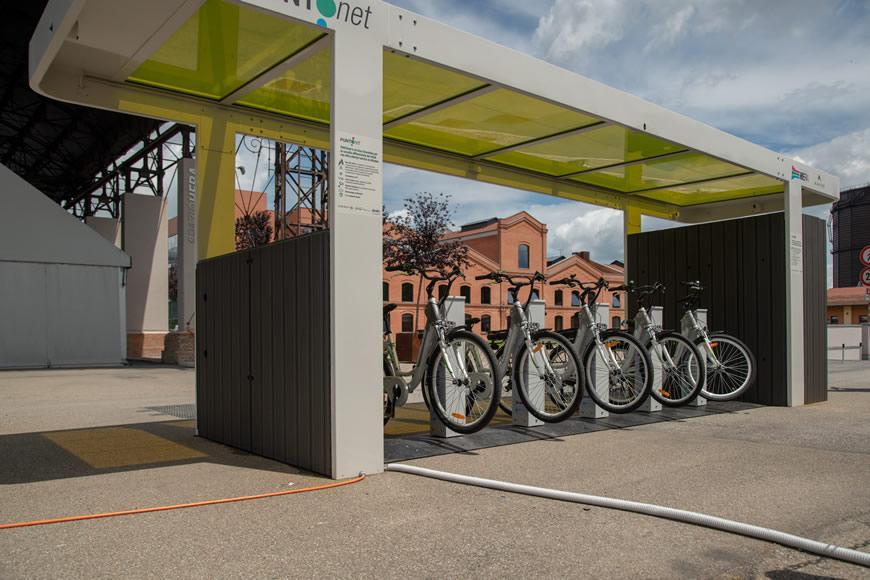
PUNTOnet.BUS
PUNTOnet.BUS has the same features as the PUNTOnet.BIKE shelter but there are benches in place of the electric bicycle parking spaces.
This technical solution can be used as a bus shelter or other waiting points distributed across the city.
